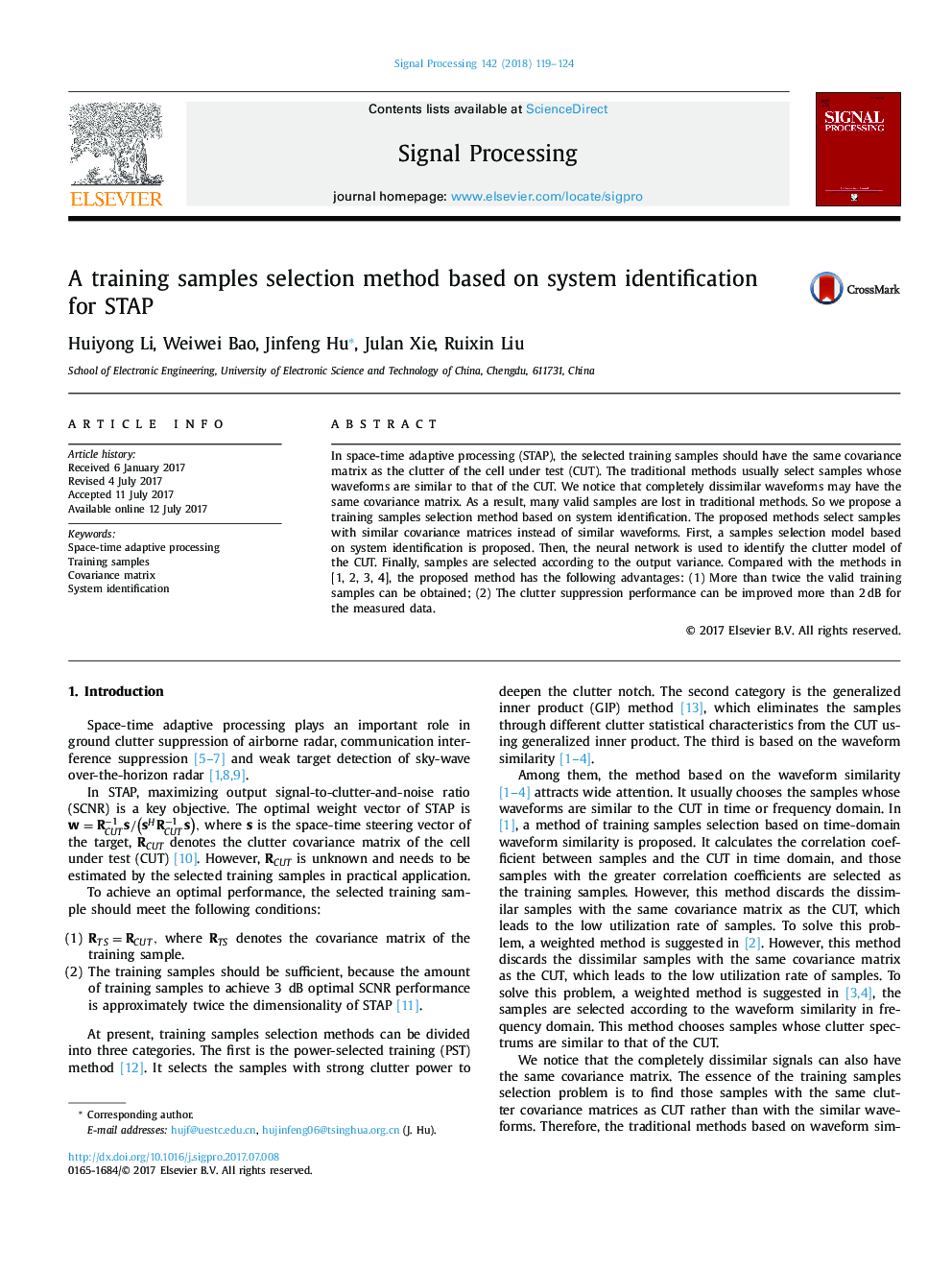| Article ID | Journal | Published Year | Pages | File Type |
|---|---|---|---|---|
| 4977368 | Signal Processing | 2018 | 6 Pages |
â¢A training samples selection method for STAP is proposed.â¢The method is based on system identification.â¢Completely dissimilar waveforms may have the same covariance matrix.â¢More valid training samples can be obtained in the proposed method.
In space-time adaptive processing (STAP), the selected training samples should have the same covariance matrix as the clutter of the cell under test (CUT). The traditional methods usually select samples whose waveforms are similar to that of the CUT. We notice that completely dissimilar waveforms may have the same covariance matrix. As a result, many valid samples are lost in traditional methods. So we propose a training samples selection method based on system identification. The proposed methods select samples with similar covariance matrices instead of similar waveforms. First, a samples selection model based on system identification is proposed. Then, the neural network is used to identify the clutter model of the CUT. Finally, samples are selected according to the output variance. Compared with the methods in [1, 2, 3, 4], the proposed method has the following advantages: (1) More than twice the valid training samples can be obtained; (2) The clutter suppression performance can be improved more than 2â¯dB for the measured data.
